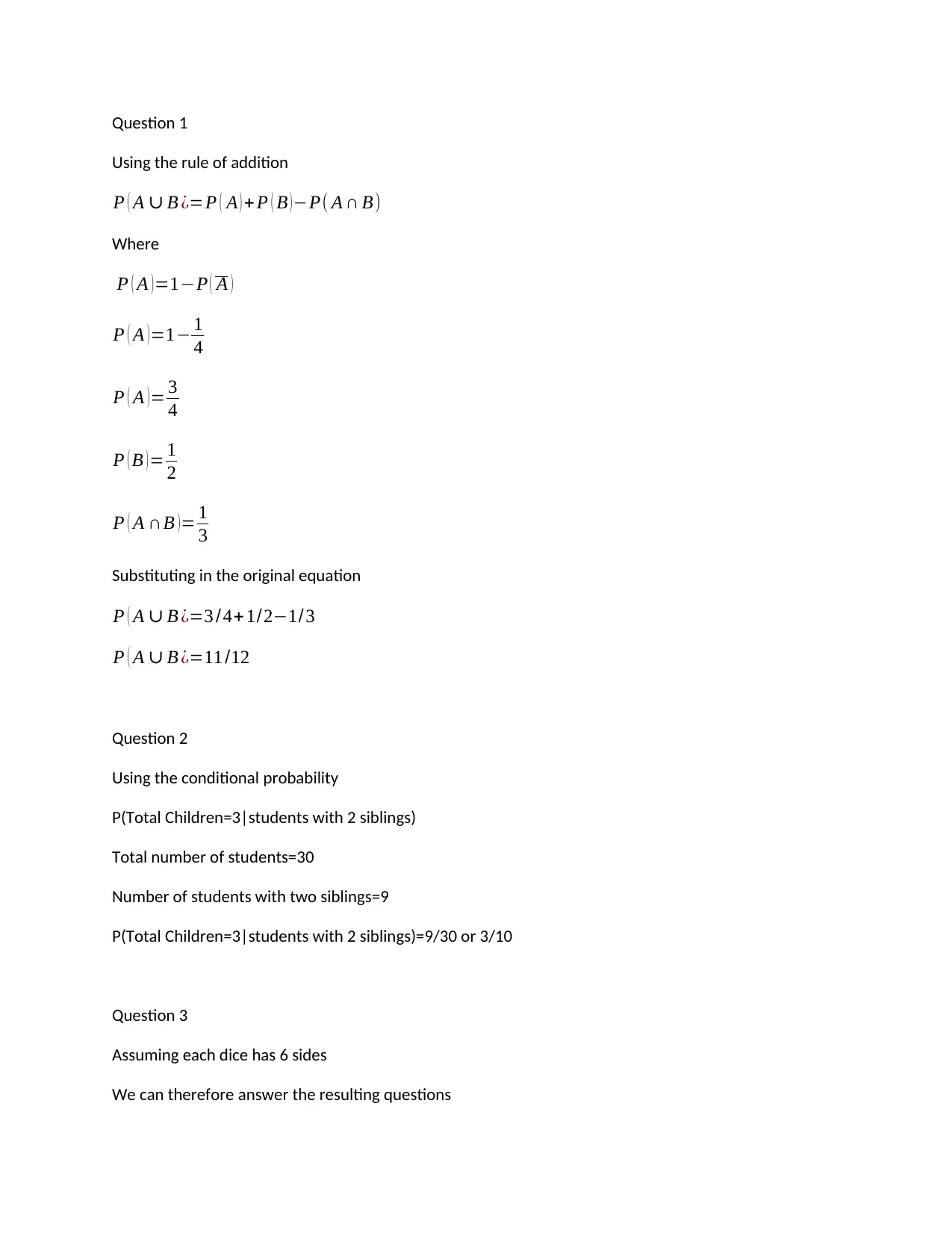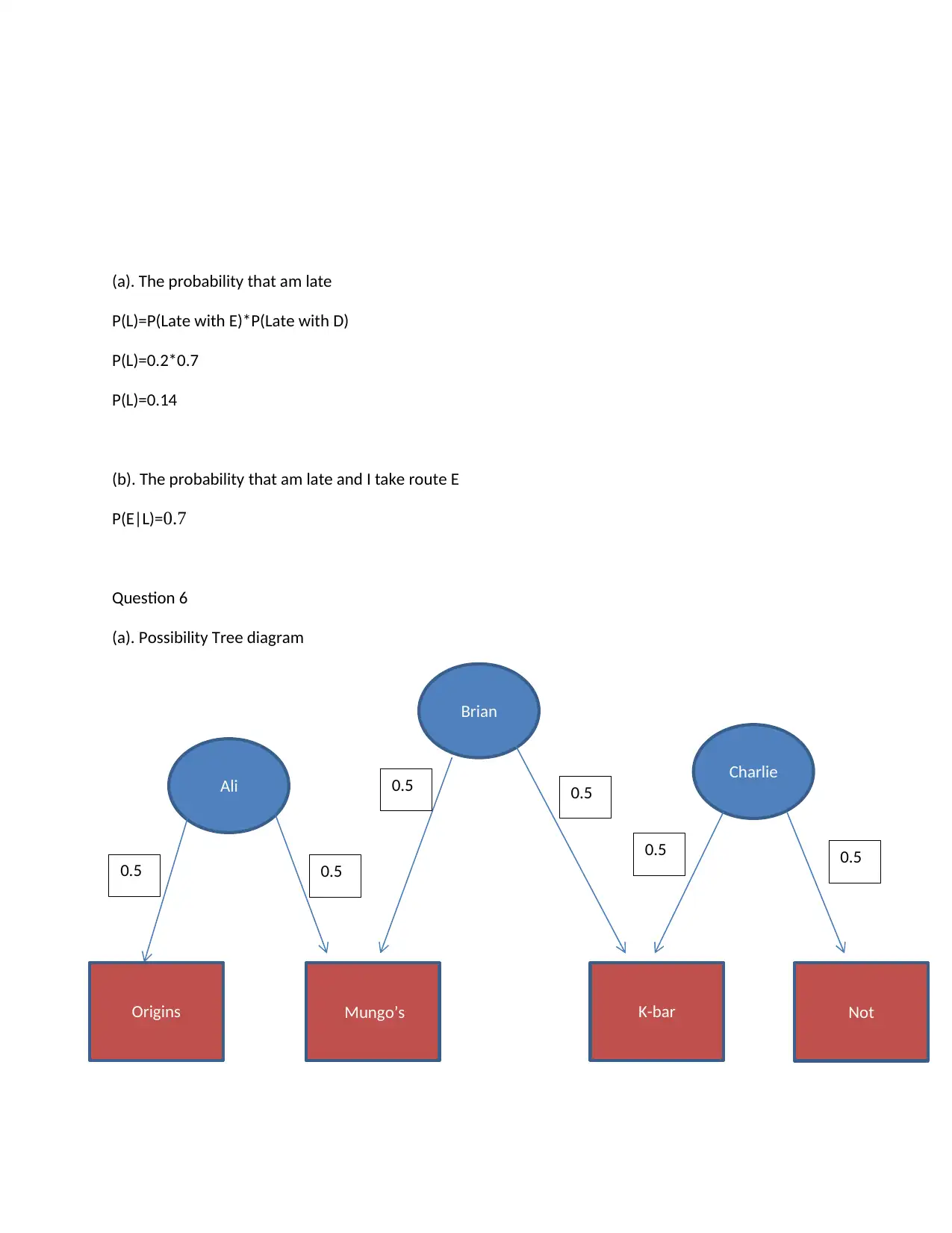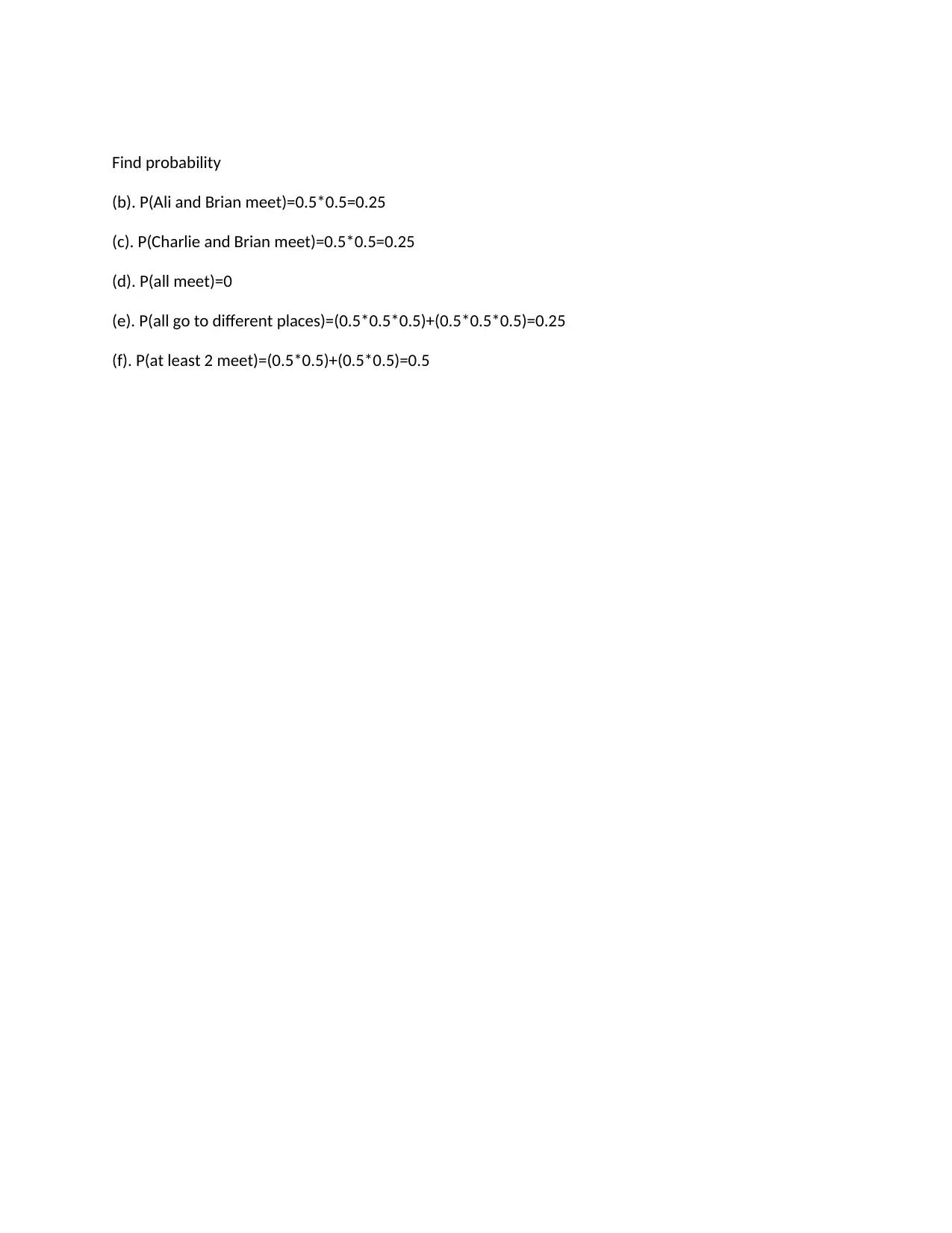Probability Problems and Solutions: Solved with Step-by-Step Guide
VerifiedAdded on 2023/06/14
|5
|663
|332
Homework Assignment
AI Summary
This assignment provides detailed solutions to a range of probability problems, starting with basic probability calculations using the rule of addition, including scenarios with complementary events. It then delves into conditional probability, demonstrated through problems involving students with siblings. The assignment also explores probability with dice, calculating probabilities of specific outcomes and identifying values based on frequency. Further, it applies Bayes' Theorem to calculate conditional probabilities and examines the concepts of intersection and union of events. The assignment also uses probability tree diagrams to solve complex probability questions. The problems include finding the probability of being late using different routes and analyzing meeting probabilities among individuals going to different locations. Desklib offers more solved assignments and study resources for students.
1 out of 5












![[object Object]](/_next/static/media/star-bottom.7253800d.svg)